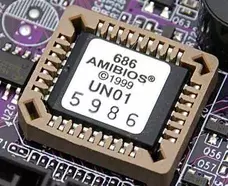Understanding Laptop BIOS: Your Gateway to System Configuration

The Basic Input/Output System (BIOS) is a fundamental component of your laptop's hardware that plays a crucial role in system initialization and configuration. Understanding how the BIOS works and its various features can help you optimize your laptop's performance and troubleshoot hardware issues effectively.
What is BIOS?
The BIOS is firmware embedded within your laptop's motherboard that initializes essential hardware components and performs system checks during the boot process. It provides a low-level interface for configuring hardware settings and boot options before handing over control to the operating system.
Key Features and Functions of Laptop BIOS:
- Boot Configuration: BIOS allows you to specify the boot order of devices, such as the hard drive, solid-state drive (SSD), optical drive, or USB drive. This determines the sequence in which your laptop searches for an operating system to load during startup.
- Hardware Configuration: BIOS provides options for configuring hardware settings such as CPU clock speed, memory timings, and voltage settings. These settings allow advanced users to optimize system performance or troubleshoot compatibility issues.
- Security Settings: BIOS includes security features such as password protection and Secure Boot, which helps prevent unauthorized access to the system and verifies the integrity of the operating system during startup.
- System Information: BIOS displays essential system information such as the laptop's model, serial number, BIOS version, and installed hardware components. This information can be useful for troubleshooting hardware issues or verifying system compatibility.
- Updating Firmware: Manufacturers periodically release BIOS updates to address security vulnerabilities, improve compatibility, or add new features. BIOS updates can be installed through the BIOS setup utility or using specialized software provided by the manufacturer.
Accessing and Navigating Laptop BIOS:
To access the BIOS setup utility on your laptop, you typically need to press a specific key during the boot process, such as F2, Del, or Esc. Once in the BIOS setup utility, you can navigate through various menus and options using the keyboard.
Important Considerations:
- Caution with Settings Changes: Making incorrect changes to BIOS settings can potentially render your laptop unbootable or cause hardware damage. Exercise caution when modifying settings and consult manufacturer documentation or support resources if unsure.
- Backup BIOS Settings: Some BIOS setups allow you to save or export BIOS settings to a file, which can be useful for restoring configurations or transferring settings to another system.
- Keep BIOS Updated: Regularly check for BIOS updates from your laptop manufacturer's website and apply them as needed to ensure compatibility, security, and performance optimizations.
Conclusion:
Laptop BIOS is a critical component that governs system initialization and configuration, providing users with essential controls for optimizing performance, enhancing security, and troubleshooting hardware issues. By understanding how to access and navigate the BIOS setup utility, you can effectively manage your laptop's hardware settings and ensure optimal functionality.
If you require assistance with BIOS configuration or updating, feel free to contact us for expert support. Our team of skilled technicians can provide guidance and assistance tailored to your specific needs.






